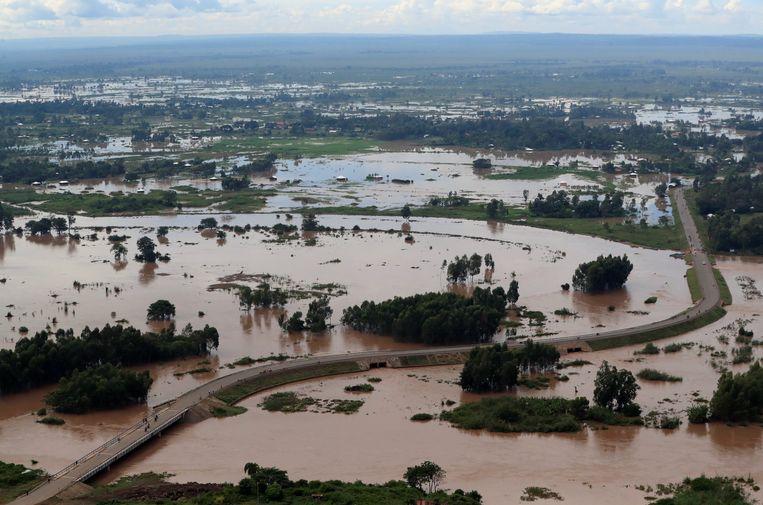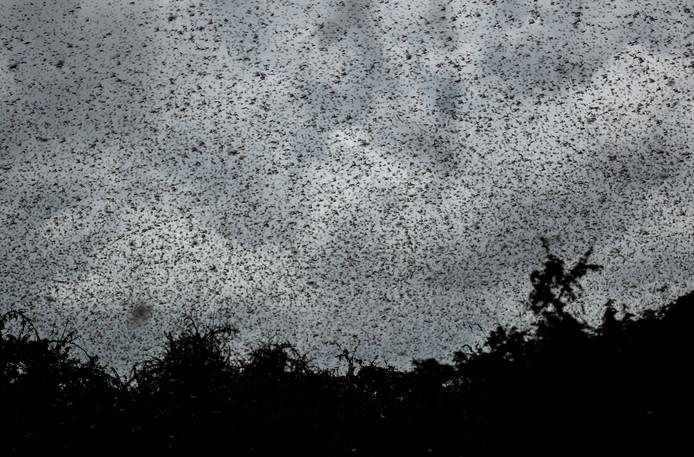East Africa facing disasters of Locust swarms, Corona, torrential rain

Swarms of locusts, a deadly monster of the coronavirus, and torrential rain engulf East Africa in disaster. Severe floods have claimed hundreds of lives. Hundreds of thousands have fled. This complicates the fight against COVID-19 and increases the plague of millions of locusts that endanger the food supply.
Ethiopia, Kenya, Rwanda, Somalia, and Uganda have been affected by heavy rainfall. The cause? The result of the global warming of the Indian Ocean, which carries moist wind currents to the region.
The consequences are disastrous. Roads and bridges have been destroyed and covered with floods. In Somalia, a small town has been washed away. It is not known how many people died as a result of torrential rainfall. In Kenya alone, the floods and mudslides have killed almost 200 people.

Many Eastern Africans have moved to higher areas, where they are received in schools. This presents governments with dilemmas in the fight against the coronavirus. “People need to keep their distance from each other, but how is that possible in a situation like this?” says Julius Mucunguzi, spokesman for the Ugandan government.
In Uganda, a hospital was heavily destroyed, even though it was built on an elevated bank and reinforced with sandbags. “Some health departments have been almost completely washed away,” says Mucunguzi. “The morgue has been wiped out.”
In Ethiopia and Kenya, more than 100,000 people have fled the high tide. “The people who fled are forced to gather in makeshift camps, with the risk of catching the virus,” says Rashid Aman of the Kenyan Ministry of Health.
Plague of locusts
In addition to the rising water and COVID-19, East Africa has been suffering from a plague of locusts since December, the largest in 70 years. The insects have eaten away tens of thousands of hectares of farmland and crops.

Grasshoppers thrive in warm and humid weather. They lay their eggs in moist soil. Adult females lay 35 to 150 eggs ‘per package’. Thanks to the rain, there is enough food for them. As a result, they reproduce at lightning speed.
The insects eat their weight of food every day and can cover more than 150 kilometers a day. A swarm of one square kilometer is made up of 40 to 50 million grasshoppers. They eat as many as 35,000 people in a day. Swarms can be hundreds of square kilometers.

“It is difficult to say whether climate change is directly responsible for the plague of locusts,” says expert Keith Cressman, of the Food and Agriculture Organization of the United Nations (FAO). “It is clear, however, that if the trend of more and more cyclones continues, East Africa will have to rely on an increase in desert locusts.”
Due to the corona crisis, pesticides are scarce. Airplanes are spraying the fields with pesticides, but the effect is limited due to the enormous size of the pest. The eggs of the second wave will hatch in June and July, exactly harvest time.
Food shortages
The International Red Cross fears devastating harvests and food shortages. “Everyone is working on the coronavirus, but in the meantime, a disaster threatens in East Africa because of a plague of locusts,” warned John Karongo, agricultural expert of the International Red Cross, last month.
“For East African farmers, the most important planting season is beginning now, but meanwhile billions of locusts threaten to destroy their farmlands and crops. If the outbreak of locusts is not stopped, we will face the largest swarms at their most hungry moment when the crops begin to ripen.”





